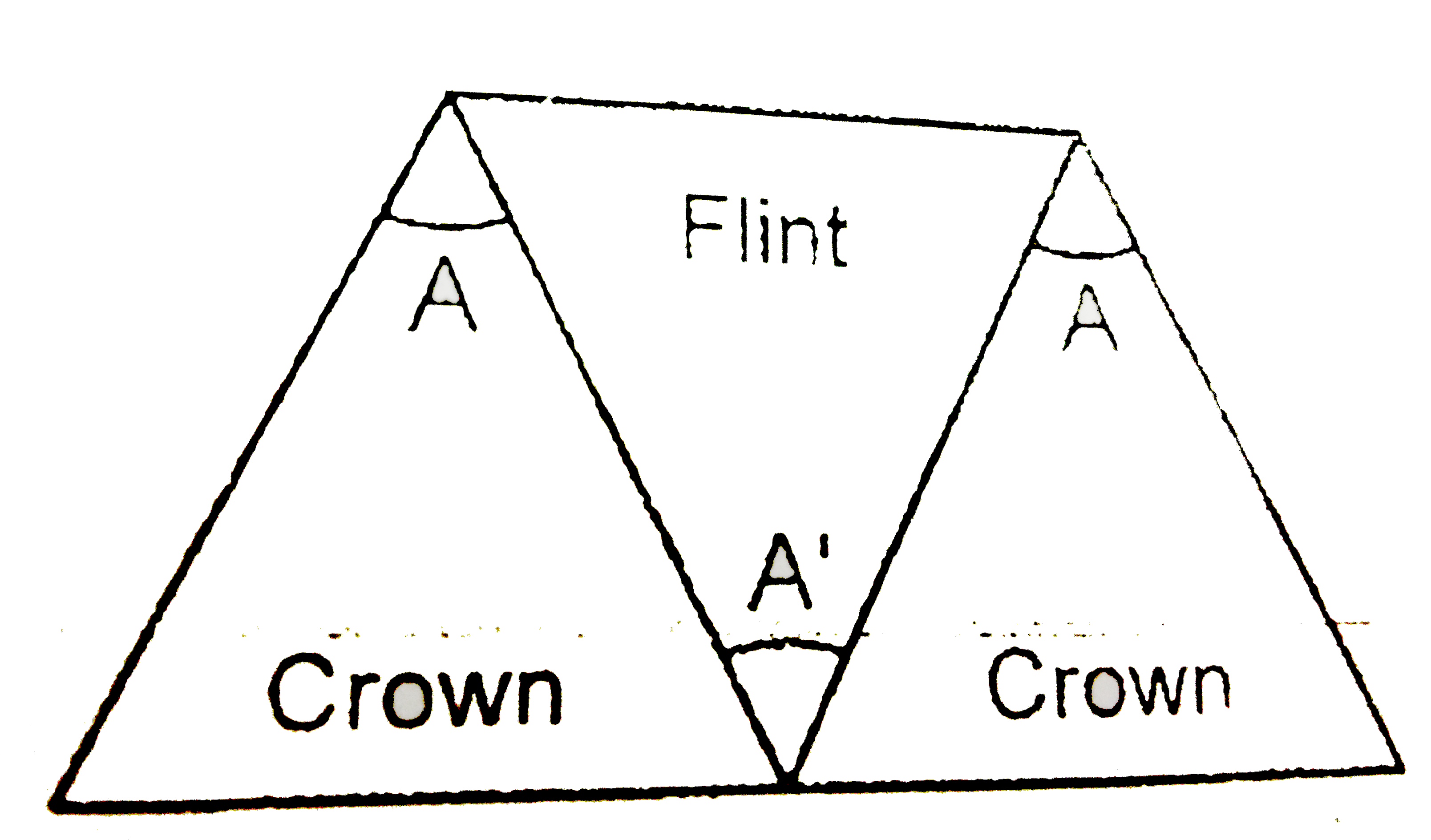Thin Prisms
Step by step video & image solution for Thin Prisms by Physics experts to help you in doubts & scoring excellent marks in Class 12 exams.
Updated on:21/07/2023Similar Questions
Minimum Deviation||Thin Prism||Dispersion Without Deviation||Deviation Without Dispersion
View SolutionTwo thin prisms are combined to form an achromatic combination. For prism I, A=4∘,μR=1.35,μY=1.40,μv=1.42 For prism II, μ′R=1.7,μ′Y=1.8andμ′V=1.9 . Find the prism angle of prism II and the net mean deviation.
View Solution
Knowledge Check
Thin prism has small____-
Aangle of incidenceBrefractive indexCangle of reflectionDrefracting angleFor thin prism angle of minimum deviation(δ) is given by
Aδ=A(1−μ)Bδ=A(μ2−1)Cδ=A(1−μ2)Dδ=A(μ−1)A thin prism P of refracting angle 3∘ and refractive index . 1.5 is combined with another thin prism Q of refractive index 1.6 to produce dispersion without deviation. Then the angle of prism Q is
A3∘B4∘C3.5∘D2.5∘
Three thin prisms are combined as shown in figure . The refractive indices of the crown glass for red , yellow and violet rays are μr,μyandμv respectively and those for the flint glass are μr',μy'andμv' respectively . Find the ratio A'A for which , there is no net angular dispersion (A and A' are respective deviations )

View SolutionTwo thin prisms are combined such that they neither produce any average deviation nor do they cause any dispersion when white light is incident on the combination. Angle of one prism is A=2° and refractive index of its glass for red, yellow and violet lights are 1.49, 1.50 and 1.51 respectively. Find the dispersive power of the glass of the other prism.
View SolutionThree thin prisms are combind as shwon in figure. The refractive indices of the crown glass for red, yhelwo and violet rays are μr,μy and μv respectively and those for the flint glass are μ'r,μ'y and μv respectively . Find the ratio A'/A for which (a) system produces deviation without dispersion (achromatic combination ) and (b) system produces dispersion without deciation (direct vision arrangement).

View SolutionColumn - II shows the optical phenomenon that can be associated with optical components given in column- I . Note the column - I may have more than one matching options in column-II.
Column IColumn II(A)Convex mirror(p)Dispersion(B)Converging lens(q)Deviation(C)Thin prism(r)Real image of real object(D)Glass slab(s)Virtual images of real object
View SolutionImage formation by a system of thin prism and lens
A beam parallel to the principal axis is incident on a thin prism (Fig. 34-60). Find the location of final image.
View Solution
